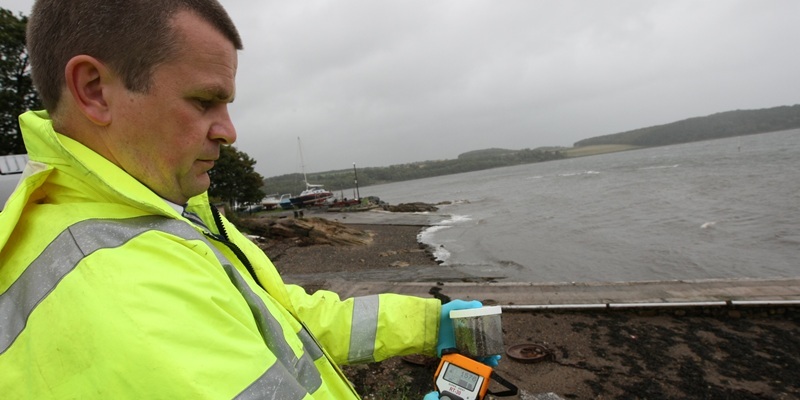Access to a stretch of Fife coast could be restricted if a radiation survey shows dangerous levels of contamination.
Experts from the Scottish Environment Protection Agency (SEPA) are carrying out investigation work at the headland beside Dalgety Bay Sailing Club to find out if buried material is responsible for the presence of radioactive particles along the nearby shore.
It is hoped the survey work will pinpoint the source of radiation that was first found at Dalgety Bay beach in 1990. Members of the public have been warned not to remove items from the shore and to wash their hands after visiting the beach.
However, if SEPA’s investigation reveals that dangerous levels of radiation are present, public access could be restricted.
Radioactive substance specialist Dr Paul Dale said it was hoped SEPA would be able to present the initial findings of the survey before the end of the year, with a more comprehensive report expected in the spring.
He said: “If there is a significant change in the hazard then we would have to review it accordingly. We would recommend that access is restricted in that event.”
SEPA’s research indicates there is a constant source of contamination because more radioactivity appears no matter how often the beach is cleaned up.Source of radiationThe radiation is being caused by particles of radium 226 used on the luminous dials of aircraft from the nearby Donibristle Airfield.
SEPA believes the aircraft were broken up and bulldozed into the ground at the headland and erosion is causing contamination to leak onto the beach.
Dr Dale said in the meantime the public should take the recommended precautions when accessing the beach.
Luminous dials have been found there in the past and he said the public should resist the temptation to collect any artefacts.
“In particular, people shouldn’t allow their children to pick up items from the beach,” he said.
The Courier was shown containers of radioactive material recently recovered by SEPA. When Dr Dale measured the material with a radioactivity counter, it gave a clear positive reading.Worry”These are the ones we are worried about, because small particles can be ingested.”
Last week, SEPA experts used a ground penetrating radar to examine the structure of the headland. They have also examined the shore using metal detectors.
On Monday, SEPA set about removing surface soil from the headland, where they will lower a detector into a hole in the ground to look for radiation.
Dr Dale added: “We’ve been lifting turfs up then monitoring it, then removing some surface soil. We will be sending a core into the ground then lowering a detector into the hole. The work could last all week.
“We’re hoping to be able to provide some kind of update before Christmas of this year.”
The work coincides with surface surveys being carried out by the Defence Infrastructure Organisation, a branch of the Ministry of Defence.
In February, SEPA warned that the hazard posed to the public may have been underestimated.
